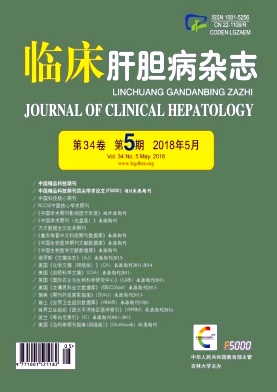|
[1]LASKAR MG, ERIKSSON M, RUDLING M, et al.Treatment with the natural FXR agonist chenodeoxycholic acid reduces clearance of plasma LDL whilst decreasing circulating PCSK9, lipoprotein (a) and apolipoprotein C-III[J].J Intern Med, 2017, 281 (6) :575-585.
|
|
[2]WANG W, ZHAN M, LI Q, et al.FXR agonists enhance the sensitivity of biliary tract cancer cells to cisplatin via SHPdependent inhibition of Bcl-x L expression[J].Oncotarget, 2016, 7 (23) :34617-34629.
|
|
[3]FORMAN B, GOODE E, CHEN J, et al.Identification of a nuclear receptor that is activated by farnesol metabolites[J].Cell, 1995, 81 (5) :687-693.
|
|
[4]ZHANG Y, EDWARDS PA.FXR signaling in metabolic disease[J].FEBS Lett, 2008, 582 (1) :10-18.
|
|
[5]FIORUCCI S, CIPRIANI S, MENCARELLI A, et al.Farnesoid X receptor agonist for the treatment of liver and metabolic disorders:focus on 6-ethyl-CDCA[J].Mini Rev Med Chem, 2011, 11 (9) :753-762.
|
|
[6]MAKISHIMA M, OKAMOTO A, REPA J.Identification of a nuclear receptor for bile acids[J].Science, 1999, 284 (5418) :1362-1365.
|
|
[7]LI Y, JADHAV K, ZHANG Y.Bile acid receptors in non-alcoholic fatty liver disease[J].Biochem Pharmacol, 2013, 86 (11) :1517-1524.
|
|
[8]CHEN F, MA L, DAWSON PA, et al.Liver receptor homologue-1 mediates species-and cell line-specific bile acid-dependent negative feedback regulation of the apical sodium-dependent bile acid transporter[J].J Bio Chem, 2003, 278 (22) :19909-19916.
|
|
[9]ZHAO J, LI W, YAO DK.Role of farnesoid X receptor in treatment of primary biliary cholangitis[J].Chin J Dig Dis, 2017, 22 (2) :109-111. (in Chinese) 赵健, 李伟, 姚定康.法尼醇X受体在原发性胆汁性胆管炎治疗中的作用[J].胃肠病学, 2017, 22 (2) :109-111.
|
|
[10]XU Q, LI L, WEI WH, et al.Farnesoid X receptor gene polymorphisms and metabolic disese[J].Clin J Clin Pharmacol Ther, 2017, 22 (10) :1180-1188. (in Chinese) 徐千, 李玲, 魏婉慧, 等.法尼酯衍生物X受体基因多态性与代谢性疾病的相关性[J].中国临床药理学与治疗学, 2017, 22 (10) :1180-1188.
|
|
[11]MARSCHALLl H, LUKETIC V, LOVGREN-SANDBLOM A.The farnesoid X receptor agonist obeticholic acid increases plasma FGF-19 concentrations and decreases bile acid synthesis in primary biliary cirrhosis[J].J Hepatol, 2012, 56 (2) :s377.
|
|
[12]GROBER J, ZAGHINI I, FUJII H, et al.Identification of a bile acid-responsive element in the human ileal bile acid-binding protein gene.Involvement of the farnesoid X receptor/9-cis-retinoic acid receptor heterodimer[J].J Bio Chem, 1999, 274 (42) :29749-29754.
|
|
[13]LEE H, ZHANG Y, LEE FY, et al.FXR regulates organic solute transporters alpha and beta in the adrenal gland, kidney, and intestine[J].J Lipid Res, 2006, 47 (1) :201-214.
|
|
[14]LAMBERT G, AMAR MJ, GUO G, et al.The farnesoid X-receptor is an essential regulator of cholesterol homeostasis[J].J Bio Chem, 2003, 278 (4) :2563-2570.
|
|
[15]WATANABE M, HOUTEN SM, WANG L, et al.Bile acids lower triglyceride levels via a pathway involving FXR, SHP, and SREBP-1c[J].J Clin Invest, 2004, 113 (10) :1408-1418.
|
|
[16]HU ZJ, REN LP, WANG C, et al.Protective effect of chenodeoxycholic acid against lipid kidney injury induced by high-fructosefeeding in rats and the underlying mechanism[J].Chin J Nephrol, 2013, 29 (2) :129-136. (in Chinese) 胡志娟, 任路平, 王超, 等.鹅脱氧胆酸对高果糖饮食致大鼠肾损伤的保护作用及其机制[J].中华肾脏病杂志, 2013, 29 (2) :129-136.
|
|
[17]FU J, WANG H.Precision diagnosis and treatment of liver cancer in China[J].Cancer Lett, 2018, 412 (1) :283-288.
|
|
[18]National Health and Family Planning Commission of the People's Republic of China.Diagnosis, management, and treatment of hepatocellular carcinoma (V2017) [J].J Clin Hepatol, 2017, 33 (8) :1419-1431. (in Chinese) 中华人民共和国国家卫生和计划生育委员会.原发性肝癌诊疗规范 (2017年版) [J].临床肝胆病杂志, 2017, 33 (8) :1419-1431.
|
|
[19]LI J, QI XS, HAN T, et al.An excerpt of AASLD guidelines for the treatment of hepatocellular carcinoma (2016) [J].J Clin Hepatol, 2017, 33 (4) :621-622. (in Chinese) 李静, 祁兴顺, 韩涛, 等.《2016年美国肝病学会肝细胞癌治疗指南》摘译[J].临床肝胆病杂志, 2017, 33 (4) :621-622.
|
|
[20]HAO FJ, CHEN XP.Role of farnesoid X receptor in liver tumor and liver regeneration[J].Acta Med Univ Sci Technol Huazhong, 2013, 42 (3) :369-372. (in Chinese) 郝风杰, 陈孝平.FXR及其在肝脏肿瘤及肝脏再生中的作用[J].华中科技大学学报:医学版, 2013, 42 (3) :369-372.
|
|
[21]ZHAO C, CONG YL, XU WJ, et al.Role of farnesoid X receptor in tumor research and treatment[J].Progr Physiolog Sci, 2012, 43 (4) :303-305. (in Chinese) 赵丛, 丛玉玲, 徐纬骏, 等.法尼酯X受体对于肿瘤研究和治疗的作用[J].生理科学进展, 2012, 43 (4) :303-305.
|
|
[22]NIE JJ, LI QP, GE XX, et al.Study of bile acid and its receptor in the development of cholangiocarcinoma[J].Natl Med J China, 2016, 96 (10) :830-832. (in Chinese) 聂俊杰, 李全朋, 葛贤秀, 等.胆汁酸及其受体在胆管癌发生发展过程中的研究进展[J].中华医学杂志, 2016, 96 (10) :830-832.
|
|
[23]DAI J, WANG H, SHI Y, et al.Impact of bile acids on the growth of human cholangiocarcinoma via FXR[J].J Hematol Oncol, 2011, 4:41.
|
|
[24]WANG W, YIN X, LI G, et al.Expressions of farnesoid X receptor and myeloid cell leukemia sequence 1 protein are associated with poor prognosis in patients with gallbladder cancer[J].J Chin Med Assoc, 2014, 127 (14) :2637-2642.
|
|
[25]DAI J, WANG H, DONG Y, et al.Bile acids affect the growth of human cholangiocarcinoma via NF-κB pathway[J].J Cancer Invest, 2013, 31 (2) :111-120.
|
|
[26]ZHANG Y, HAGEDORN CH, WANG L.Role of nuclear receptor SHP in metabolism and cancer[J].J Biochim Biophys Acta, 2011, 1812 (8) :893-908.
|
|
[27]QIN CY, LIU H.Apoptosis-inducing effect of synthetic chenodeoxycholic acid derivative, HS 1200, in human hepatoma cell line BEL-7402 and the mechanisms involved[J].World Chin J Dig, 2010, 18 (7) :641-645. (in Chinese) 秦成勇, 刘慧.鹅脱氧胆酸衍生物HS-1200诱导人肝癌细胞株凋亡的作用及机制[J].世界华人消化杂志, 2010, 18 (7) :641-645.
|
|
[28]ZHANG ZH, LIU WQ, LAI YS.Advances in research on antitumor effect of bile acid derivatives[J].Progr Pharm Sci, 2010, 34 (11) :491-498. (in Chinese) 张之昊, 刘文清, 赖宜生.胆汁酸衍生物的抗肿瘤作用研究进展[J].药学进展, 2010, 34 (11) :491-498.
|
|
[29]YEE SB, SONG YS, JEONG SH, et al.A novel chenodeoxycholic derivative HS-1200 enhances radiation-induced apoptosis in MCF-7 cells[J].Oncol Rep, 2007, 17 (4) :919-923.
|
|
[30]PARK SE, LEE SW, HOSSAIN MA, et al.A chenodeoxycholic derivative, HS-1200, induces apoptosis and cell cycle modulation via Egr-1 gene expression control on human hepatoma cells[J].Cancer Lett, 2008, 270 (1) :77-86.
|
|
[31]LIU H, QIN CK, HAN GQ, et al.Synthetic chenodeoxycholic acid derivative, HS-1200, induces apoptosis of human hepatoma cells via a mitochondrial pathway[J].Cancer Lett, 2008, 270 (2) :242-249.
|







 DownLoad:
DownLoad: